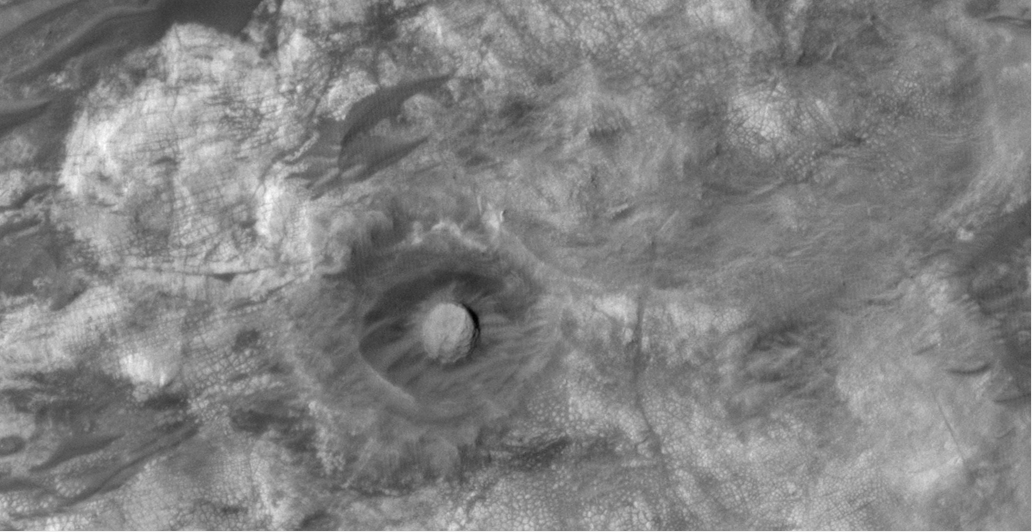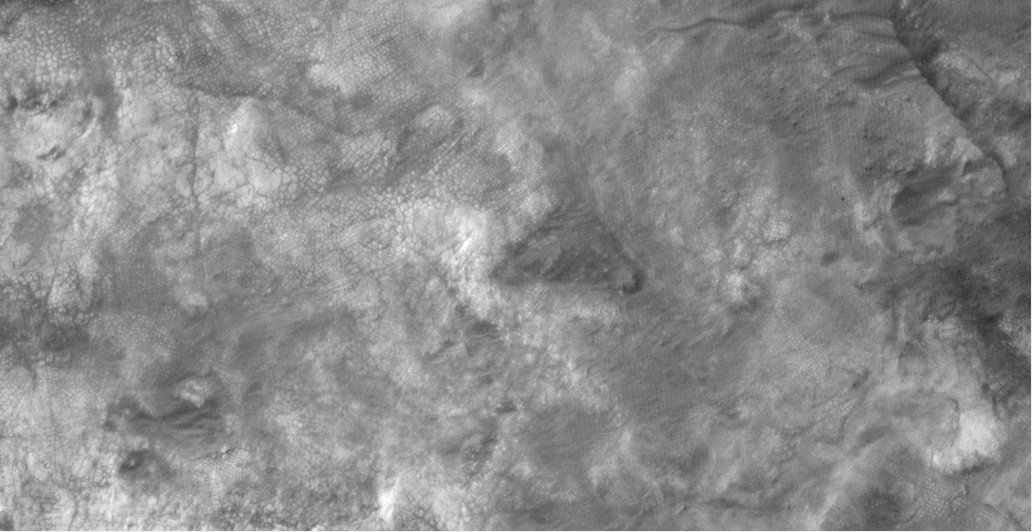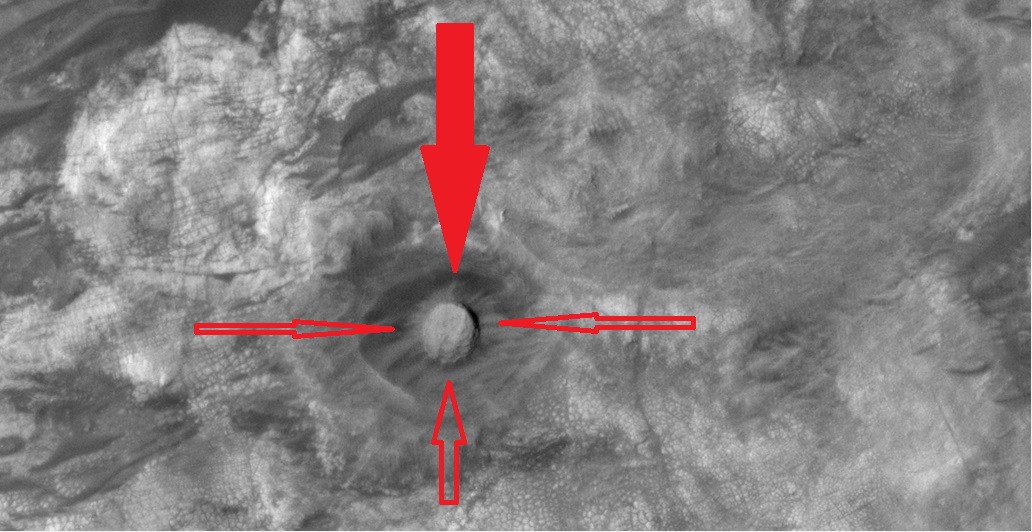It looks like you're using an Ad Blocker.
Please white-list or disable AboveTopSecret.com in your ad-blocking tool.
Thank you.
Some features of ATS will be disabled while you continue to use an ad-blocker.
share:
Coordinates for the "Dome Crater":
23 deg 44 min N, 18 deg 55 min W
23 deg 44 min N, 18 deg 55 min W
originally posted by: ArMaP
I found that area on photo PSP_009115_2040.
Here's a view of the "dome" at 100%.
(click for full size)
And the "pyramid".
No disc, no dome, no pyramid.
Agreed no disk.
But how do you explain that nice round ball with the curved shadow (just left of the sphere)? And sharp angles that form that pyramid?
edit on
V282017Thursdaypm31America/ChicagoThu, 06 Jul 2017 18:28:31 -05001 by Violater1 because: jfdfhffruvjqao
How many hours of looking over Google Earth tography does it take before your mind start to invent these things? I want to make sure I stop looking
before it happens.
originally posted by: Violater1
originally posted by: ArMaP
originally posted by: Violater1
But how do you explain that nice round ball with the curved shadow (just left of the sphere)?
Ball? I don't see any ball.
And sharp angles that form that pyramid?
What's special about sharp angles?
What shape or object do you see here?
Just because its a ball doesn't mean there's aliens.
I don't understand why some skeptics are so certain that if they even entertain the slightest possibility of an anomaly their brains are gonna fall out so they just cover their ears and eyes and stick their heads in the sand.
Smh...
The ball is as plain as the phone i hold in my hand but that doesn't automatically mean aliens created it.
For all we know NASA sent a team of astronauts and scientists to Mars in order to do some studies all in secrecy. We have covert ops and tech not yet available so could just as easily be Earthling as Martian. Just saying...
The ball could also have been a rock that rolled through a sand dune and collected sand making it round like a sandy snowball before coming to rest in the crater.
Many explanations
I think many of the topological features of Mars are due to volcanic activity in a low-gravity environment. This allows features to form that would
impossible on Earth. That would include spectacularly large crystal formations as well. Mars seems to have undergone severe trauma in the distant
past, unlike anything experienced on Earth since life first began here.
originally posted by: Asktheanimals
I think many of the topological features of Mars are due to volcanic activity in a low-gravity environment. This allows features to form that would impossible on Earth. That would include spectacularly large crystal formations as well. Mars seems to have undergone severe trauma in the distant past, unlike anything experienced on Earth since life first began here.
How does low grav affect volcanic activity? You've peaked my curiosity.
a reply to: Violater1
Fox News didn't mention the saucer. But the Dome and Pyramid are newsworthy, it seems.
www.foxnews.com...
Fox News didn't mention the saucer. But the Dome and Pyramid are newsworthy, it seems.
www.foxnews.com...
I propose that once a year they hand the Hubble and the James Webb Space Telescope over to the internet. We can get hotshot pictures of Tranquility
Base and Cydonia once and for all.
edit on 7-7-2017 by Zelun because: Becuase George =/= James
a reply to: Zelun
You may want to learn a bit about optics. The work of Mr. Rayleigh in particular. Angular resolution is directly related to the size of the mirror used.
Hubble cannot resolve small things on the Moon or Mars. Nor will Webb be able to.
www.telescope-optics.net...
You may want to learn a bit about optics. The work of Mr. Rayleigh in particular. Angular resolution is directly related to the size of the mirror used.
Hubble cannot resolve small things on the Moon or Mars. Nor will Webb be able to.
www.telescope-optics.net...
edit on 7/7/2017 by Phage because: (no reason given)
Exact coordinates for the "dome" - 23 44 45.53 N, 18 55 38.70 W
Here it is at 2x of original image scale, and with slightly improved contrast:
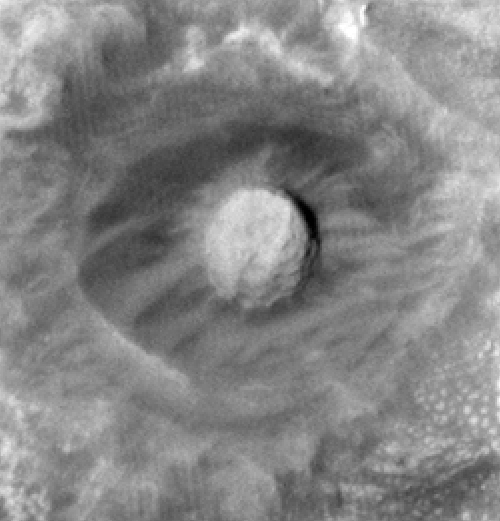
The image page says that the Sun was approx 45 degrees above the horizon when this image was taken. If this were a sphere or tall dome, it would have left a much bigger shadow.
Actually, at 45 degree Sun angle, an object's shadow on level ground will be just as long as the object is tall. Let's assume, for simplicity, that this "dome" is on level ground. At the original image scale, the shadow is at best 4 pixels long. The image's resolution is 25 cm / pixel, giving us 1 meter.
Thus, this "dome" is only about 1 meter tall. It's just a fairly flat and vaguely round formation, probably of sedimentary nature.
P.S. bonus - a nearly true-colour image of the "dome", albeit at a lower resolution:
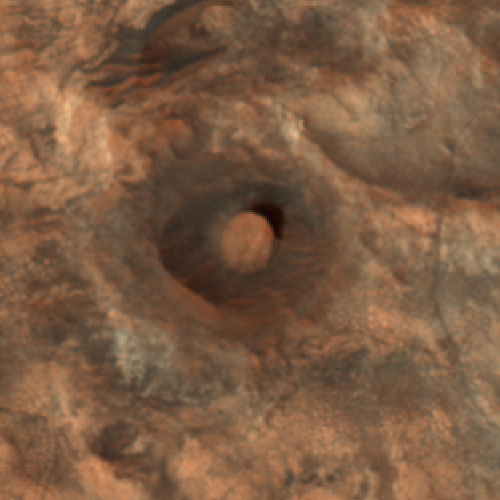
The Sun angle for this one was only 25 degrees above the gorizon, which would have left one hell of a shadow if it were a sphere or a dome.
Here, I used the colour from the second image with the higher-rez first image for this composite:
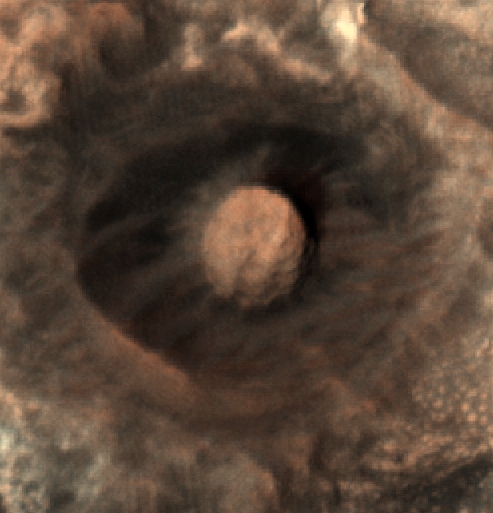
Here it is at 2x of original image scale, and with slightly improved contrast:

The image page says that the Sun was approx 45 degrees above the horizon when this image was taken. If this were a sphere or tall dome, it would have left a much bigger shadow.
Actually, at 45 degree Sun angle, an object's shadow on level ground will be just as long as the object is tall. Let's assume, for simplicity, that this "dome" is on level ground. At the original image scale, the shadow is at best 4 pixels long. The image's resolution is 25 cm / pixel, giving us 1 meter.
Thus, this "dome" is only about 1 meter tall. It's just a fairly flat and vaguely round formation, probably of sedimentary nature.
P.S. bonus - a nearly true-colour image of the "dome", albeit at a lower resolution:

The Sun angle for this one was only 25 degrees above the gorizon, which would have left one hell of a shadow if it were a sphere or a dome.
Here, I used the colour from the second image with the higher-rez first image for this composite:

edit on 7-7-2017 by wildespace because: (no reason given)
a reply to: wildespace
I would think it's a large boulder that has hit The Moon's surface and is now resting in the crater it created on impact.
I would think it's a large boulder that has hit The Moon's surface and is now resting in the crater it created on impact.
originally posted by: alldaylong
a reply to: wildespace
I would think it's a large boulder that has hit The Moon's surface and is now resting in the crater it created on impact.
That's what you get when you drop a rock into shallow mud from a couple meters up. Meteoric impacts are of a completely different nature because of the high speeds involved.
Kinetic energy increases in direct proportion to the mass of the impactor. Thus (assuming the speed stays the same) an object 100 times more massive is going to have 100 the kinetic energy. However, kinetic energy increases as the square of the velocity. Assuming the mass is the same, an object moving 100 times faster is going to have 10,000 times the kinetic energy! HOW massive is a rock big enough to be seen from space? o.O
At ~3 kilometers per second (kps), the energy is equivalent to the impactor's mass in high explosive. In other words, the impact of a 1kg rock at 3kps has the same energy as setting-off 1kg of TNT, which is quite sufficient to obliterate the 1kg rock.
Objects falling to Mars from space have a minimum impact velocity of ~5kps, which results in an energy release equivalent to over two-and-a-half times the mass of the impactor. Most asteroids will hit several kps faster. Most comets will hit tens of kps faster.
At the speeds we're talking about, both the impactor and the surface it hits will be vaporized. Large impacts that generate craters many miles across also generate enough heat to melt the rock on the bottom & sides of the crater. When this happens you get some really interesting liquid effects. The lava first blasts outwards, then flows back to fill the void. When it gets back to the middle it can splash upwards, forming a bulge or peak in the center of the crater; much like what you get from drops of water:
That's what we're seeing here.
Hope this helps.
new topics
-
Cats Used as Live Bait to Train Ferocious Pitbulls in Illegal NYC Dogfighting
Social Issues and Civil Unrest: 55 minutes ago -
The Good News According to Jesus - Episode 1
Religion, Faith, And Theology: 2 hours ago -
HORRIBLE !! Russian Soldier Drinking Own Urine To Survive In Battle
World War Three: 4 hours ago -
Bobiverse
Fantasy & Science Fiction: 7 hours ago -
Florida man's trip overseas ends in shock over $143,000 T-Mobile phone bill
Social Issues and Civil Unrest: 7 hours ago -
Former Labour minister Frank Field dies aged 81
People: 10 hours ago -
SETI chief says US has no evidence for alien technology. 'And we never have'
Aliens and UFOs: 11 hours ago
top topics
-
President BIDEN Vows to Make Americans Pay More Federal Taxes in 2025 - Political Suicide.
2024 Elections: 16 hours ago, 19 flags -
Florida man's trip overseas ends in shock over $143,000 T-Mobile phone bill
Social Issues and Civil Unrest: 7 hours ago, 8 flags -
SETI chief says US has no evidence for alien technology. 'And we never have'
Aliens and UFOs: 11 hours ago, 7 flags -
Former Labour minister Frank Field dies aged 81
People: 10 hours ago, 4 flags -
Bobiverse
Fantasy & Science Fiction: 7 hours ago, 3 flags -
Ode to Artemis
General Chit Chat: 17 hours ago, 3 flags -
This is our Story
General Entertainment: 14 hours ago, 3 flags -
Cats Used as Live Bait to Train Ferocious Pitbulls in Illegal NYC Dogfighting
Social Issues and Civil Unrest: 55 minutes ago, 3 flags -
HORRIBLE !! Russian Soldier Drinking Own Urine To Survive In Battle
World War Three: 4 hours ago, 2 flags -
The Good News According to Jesus - Episode 1
Religion, Faith, And Theology: 2 hours ago, 0 flags
active topics
-
Mood Music Part VI
Music • 3098 • : BrucellaOrchitis -
-@TH3WH17ERABB17- -Q- ---TIME TO SHOW THE WORLD--- -Part- --44--
Dissecting Disinformation • 648 • : RookQueen2 -
HORRIBLE !! Russian Soldier Drinking Own Urine To Survive In Battle
World War Three • 19 • : KnowItAllKnowNothin -
Florida man's trip overseas ends in shock over $143,000 T-Mobile phone bill
Social Issues and Civil Unrest • 14 • : Raptured -
DerBeobachter - Electric Boogaloo 2
Introductions • 14 • : ElitePlebeian2 -
LaBTop is back at last.
Introductions • 16 • : ElitePlebeian2 -
VirginOfGrand says hello
Introductions • 4 • : ElitePlebeian2 -
TLDR post about ATS and why I love it and hope we all stay together somewhere
General Chit Chat • 9 • : ElitePlebeian2 -
SETI chief says US has no evidence for alien technology. 'And we never have'
Aliens and UFOs • 32 • : bhtaylor53 -
Breaking Baltimore, ship brings down bridge, mass casualties
Other Current Events • 480 • : IndieA

